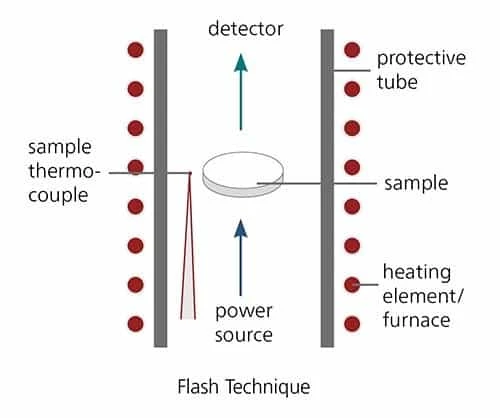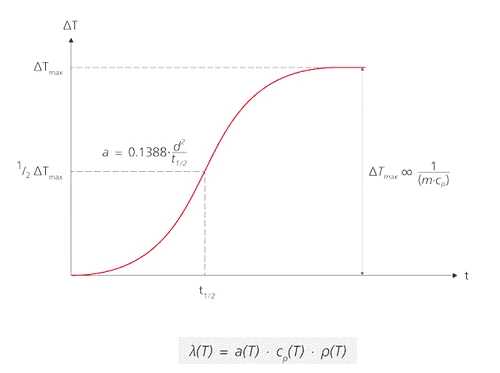
08.09.2020 by Milena Riedl
LFA Measurements with Graphite Coating: Tips and Tricks
Thermal conductivity and diffusivity are the most important thermophysical material parameters for the description of the heat transport properties of a material or component. Since the Laser Flash Analysis is an optical method that needs to eliminate reflection, special attention needs to be put on the sample preparation, for instance with a graphite coating. Learn in the video below why the way of coating a highly conductive sample depends on which material property is to be determined.
Thermal conductivity and diffusivity are the most important thermophysical material parameters for the description of the heat transport properties of a material or component. For the precise measurement of thermophysical properties like the Thermal DiffusivityThermal diffusivity (a with the unit mm2/s) is a material-specific property for characterizing unsteady heat conduction. This value describes how quickly a material reacts to a change in temperature.thermal diffusivity, the Laser Flash technique (LFA) has proven itself as a fast, versatile and precise absolute method. LFA in a nutshell When carrying out a measurement with laser flash analysis, the lower surface of a plane parallel sample (see fig. 1) is first heated by a short energy pulse. The resulting temperature rise on the upper surface of the sample is measured with an infrared detector. The typical change in temperature as a function of time is presented in figure 2 (red curve). The higher the sample’s thermal diffusivity, the steeper the signal increase. Further information here!


Why to use graphite for highly conductive, opaque and solid samples Since the Laser Flash Analysis is an optical method that needs to eliminate reflection, special attention needs to be put on the sample preparation. For highly conductive, opaque and solid samples a graphite coating may be the choice. Graphite enhances the absorption and emission properties of the sample, which usually allows for more accurate measurements. Due to the non-reflective surface of graphite, a better signal-to-noise ratio is achieved. Learn in the video below why the way of coating a highly conductive sample depends on which material property is to be determined. An experiment, carried out with the NETZSCH LFA 467 HyperFlash®, shows how to achieve the best results when measuring pure copper.